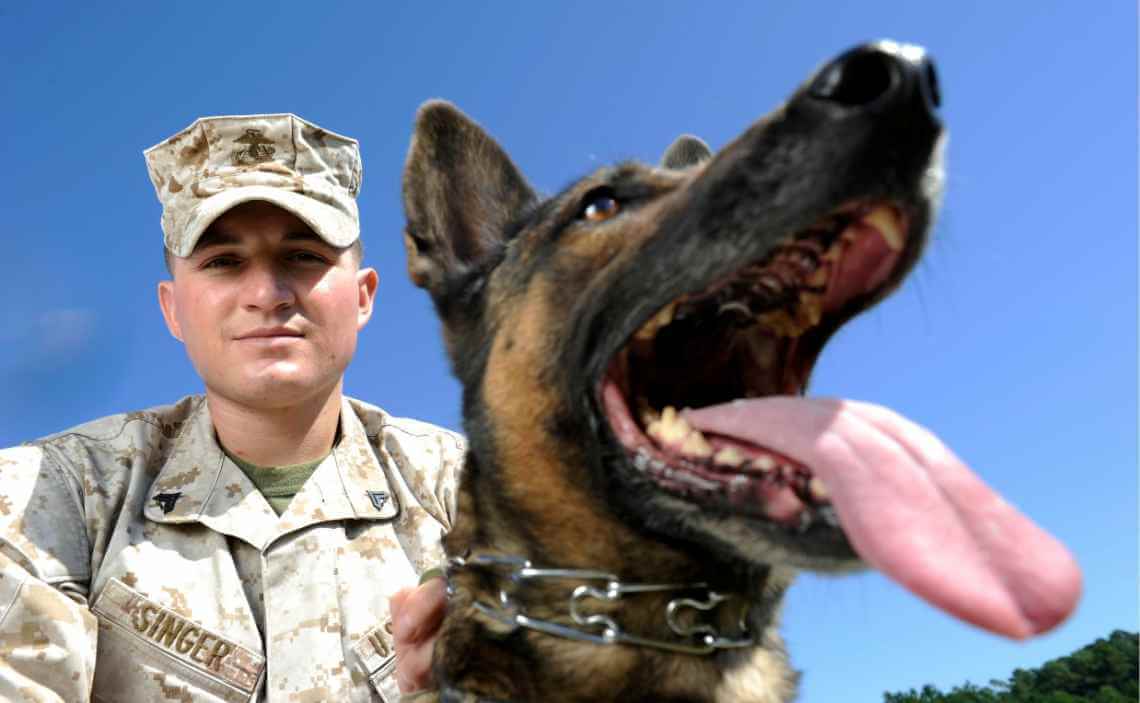 National K-9 Veteran’s Day is held every year on March 13th to commemorate and honor America’s military war dogs veterans. This day was chosen because, on March 13, 1942, the army began training dogs for a new War Dog Program, also known as the K-9 Corps. This was the first time dogs were officially a part of the U.S. Armed Forces.
National K-9 Veteran’s Day is held every year on March 13th to commemorate and honor America’s military war dogs veterans. This day was chosen because, on March 13, 1942, the army began training dogs for a new War Dog Program, also known as the K-9 Corps. This was the first time dogs were officially a part of the U.S. Armed Forces.
The annual observation honors the service and sacrifice trained canines have made for our country. National K-9 Veteran’s Day pays tribute to military dogs and countless other canines who serve our nation – from police dogs, to border patrol dogs and so many more.
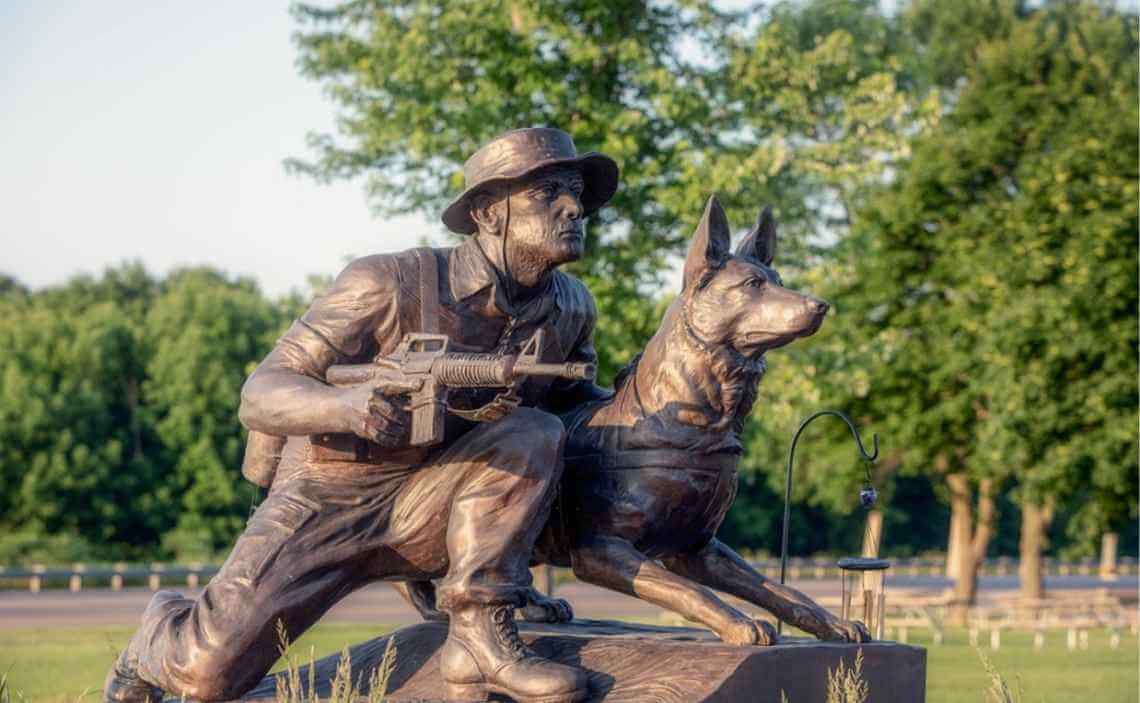 History of U.S. Military War Dogs
History of U.S. Military War Dogs
Dogs have been part of military campaigns for centuries. Documentation of their involvement during wartime dates as far back as the mid-7th century B.C. Dogs have been trained in combat, scouts, sentries and trackers; their uses have been varied and some continue to exist in modern military usage.
During WWI, the U.S. military began using dogs to deliver messages between troops. The need for military dogs was so great American families began to donate their dogs to the war effort. It has been estimated that 1,000,000 dogs were killed in action during the war.
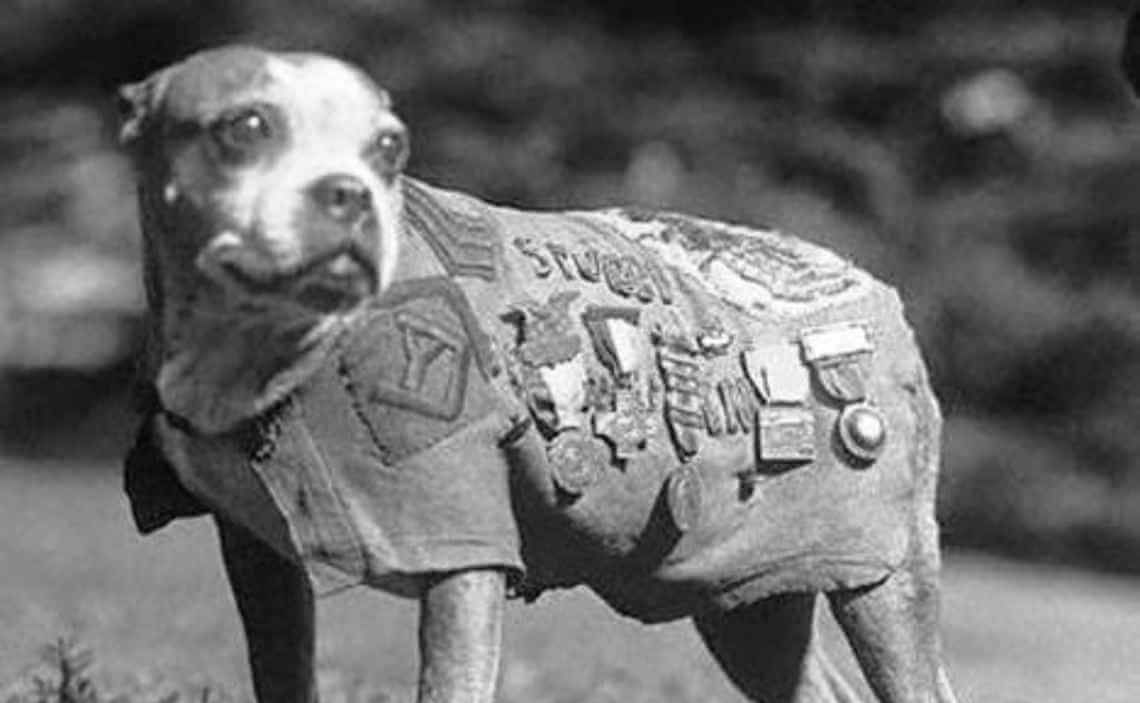 Most Decorated War Dog in U.S. History
Most Decorated War Dog in U.S. History
While there were many reports of dogs performing acts of bravery and heroism during combat, there was one dog purported to be the most decorated K-9 veteran of WWI. Sergeant Stubby, a short brindle terrier mutt, earned one wound stripe and three service stripes as the greatest war dog in history. He also was awarded the Humane Education Society Gold Medal.
Sergeant Stubby reportedly worked side-by-side with soldiers on bullet-strafed battlefields. It was said he could sniff out poison gas and bark warnings to doughboys in trenches. He met three sitting presidents, traveled the nation to veterans’ commemorations and performed in vaudeville shows at more than twice the weekly salary of the average American at the time.
Sergeant Stubby was assigned to the 26th Yankee Division in World War 1. He served for 18 months and participated in 17 battles on the Western Front. He saved his regiment from surprise mustard gas attacks, found and comforted the wounded and allegedly once caught a German soldier by the seat of his pants and held him there until American soldiers found him. Stubby is the only dog nominated for rank and promoted to sergeant through combat.
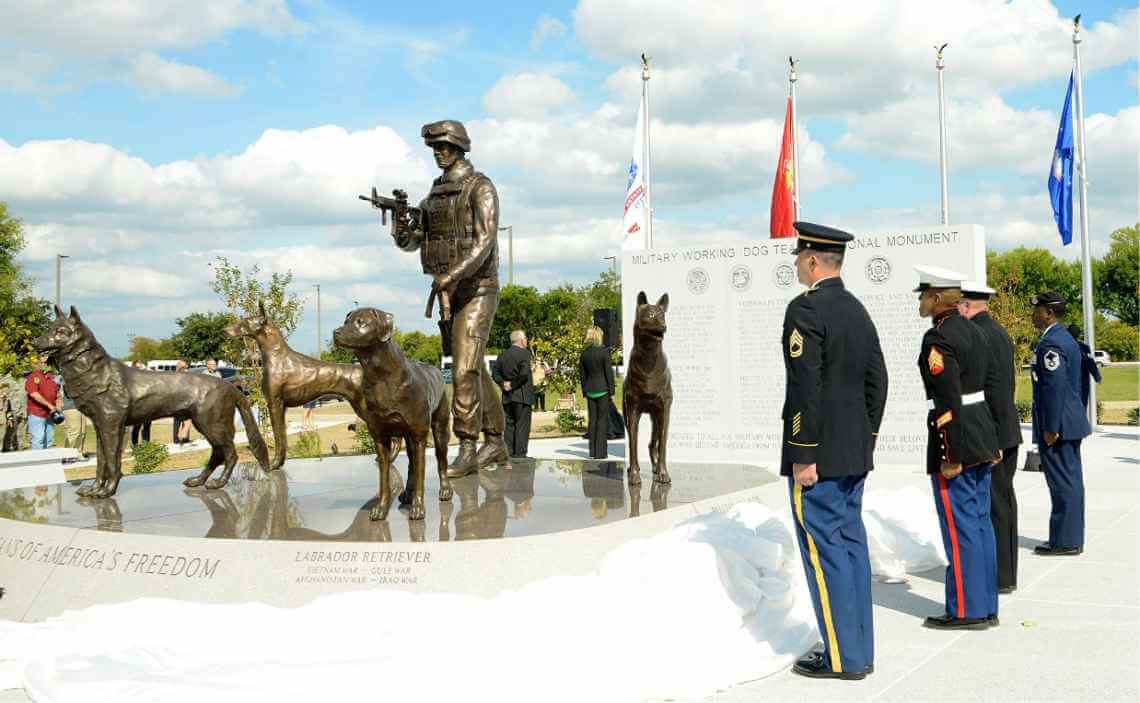 U.S. Military War Dog Memorials
U.S. Military War Dog Memorials
There are numerous memorials dedicated to war dogs, including:
- March Field Air Museum in Riverside, California
- Infantry School at Fort Benning, Georgia
- Alfred M. Gray Marine Corps Research Center in Quantico, Virginia
- Alabama War Dogs Memorial at the USS Alabama Battleship Memorial Park in Mobile, Alabama
- National War Dog Cemetery, a memorial to war dogs, is located at Naval Base Guam. The cemetery honors the dogs, mostly Doberman Pinschers, that were killed in service with the United States Marine Corps during the Second Battle of Guam in 1944.
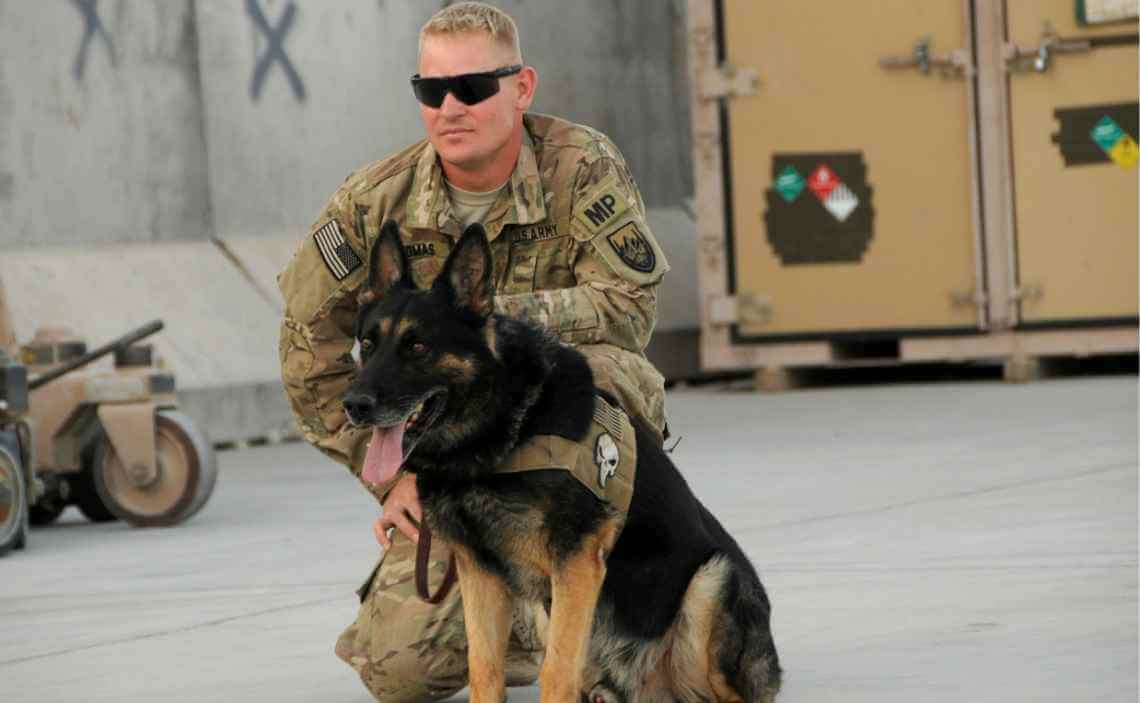 Military War Dogs After Their Tour of Duty
Military War Dogs After Their Tour of Duty
Historically, U.S. military dogs were returned home after war. This differed during the Vietnam War. U.S. war dogs were designated as expendable and were either euthanized or turned over to an allied army prior to the departure of the U.S. from South Vietnam. In 2000, President Clinton signed a law that allowed military dogs to be adopted, making the Vietnam War the only American war in which U.S. war dogs never came home.
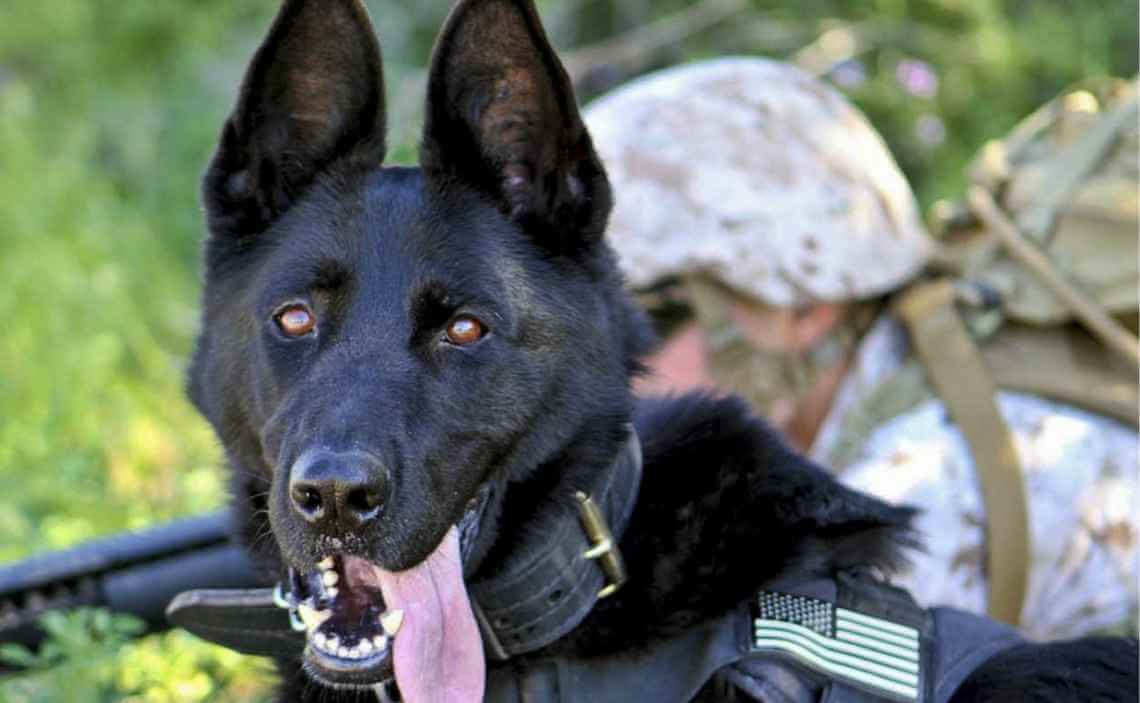 U.S. Department of Defense Military Working Dog Program
U.S. Department of Defense Military Working Dog Program
Currently, there are approximately 2,300 American military dogs stationed throughout the world. The only facility that trains dogs for military service is at Lackland Air Force Base.
The most common dog breed to serve in the military are German Shepherds. Other dog breeds include Belgian Malinois and Dutch Shepherds for patrolling and law enforcement. In the past, other dog breeds were enlisted. These dogs are hard-working, very smart and athletic.
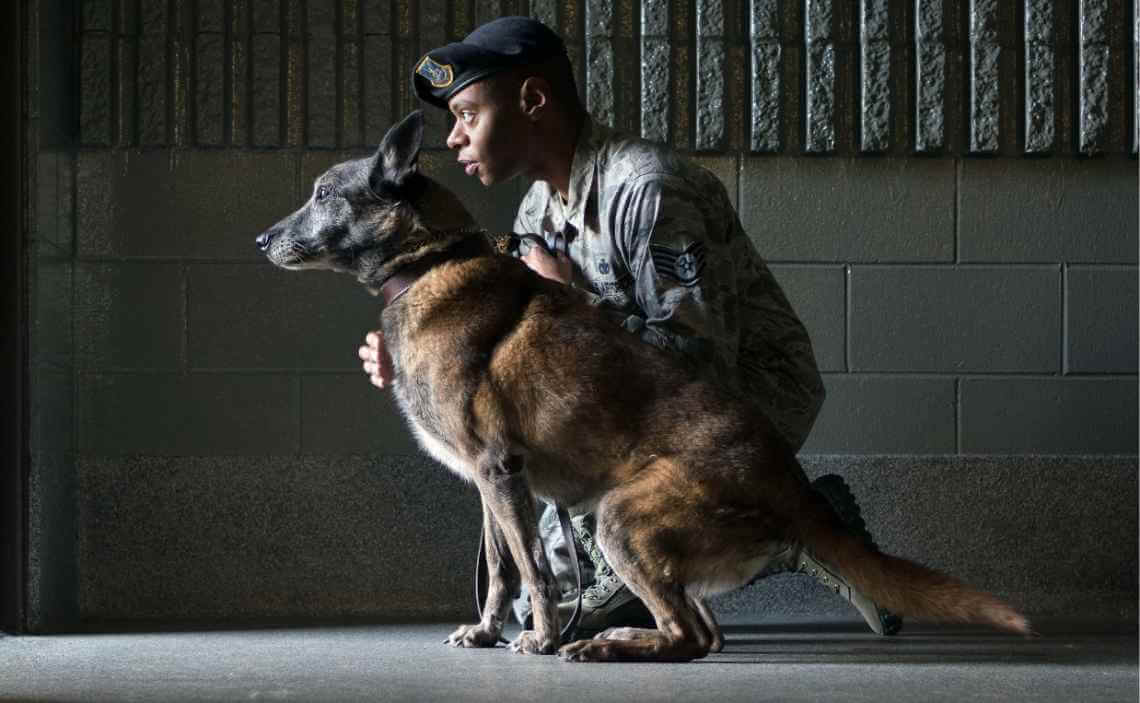 All military war dogs today are paired with a handler. While a handler usually doesn’t stay with a dog throughout the length of either the person or the dog’s career, they are usually partnered for at least a year and often much longer.
All military war dogs today are paired with a handler. While a handler usually doesn’t stay with a dog throughout the length of either the person or the dog’s career, they are usually partnered for at least a year and often much longer.
Today, military dogs continue to serve as sentries, trackers, search and rescue, scouts and mascots. Retired working dogs are often adopted as pets or therapy dogs.
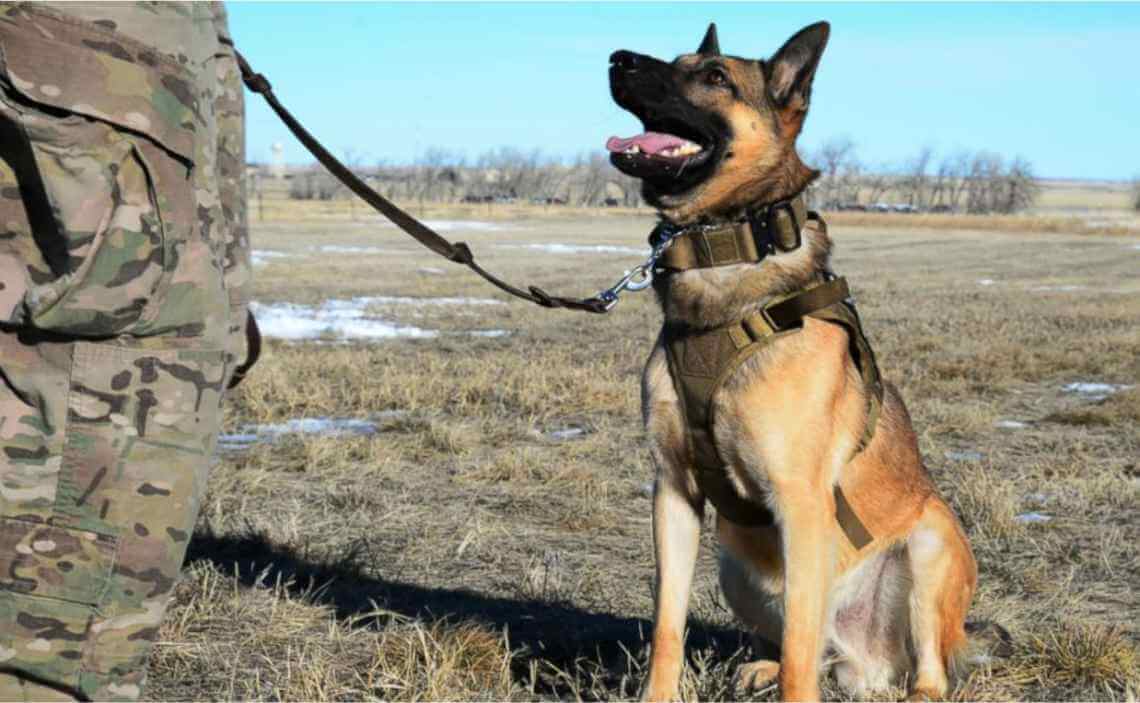 Why Use Working Dogs?
Why Use Working Dogs?
Military working dogs have an acute sense of smell – five to 10 times stronger than human’s, enabling them to detect minute traces of explosives or drugs and alert their handlers of their presence. They are deployed to help safeguard military bases and detect bombs and other explosives before they inflict harm.
At the same time, dogs have the ability to inflict fear in an aggressor in a way a human – even if armed – often can’t, and will defend their handlers to the end. A dog presents a strong psychological deterrent.
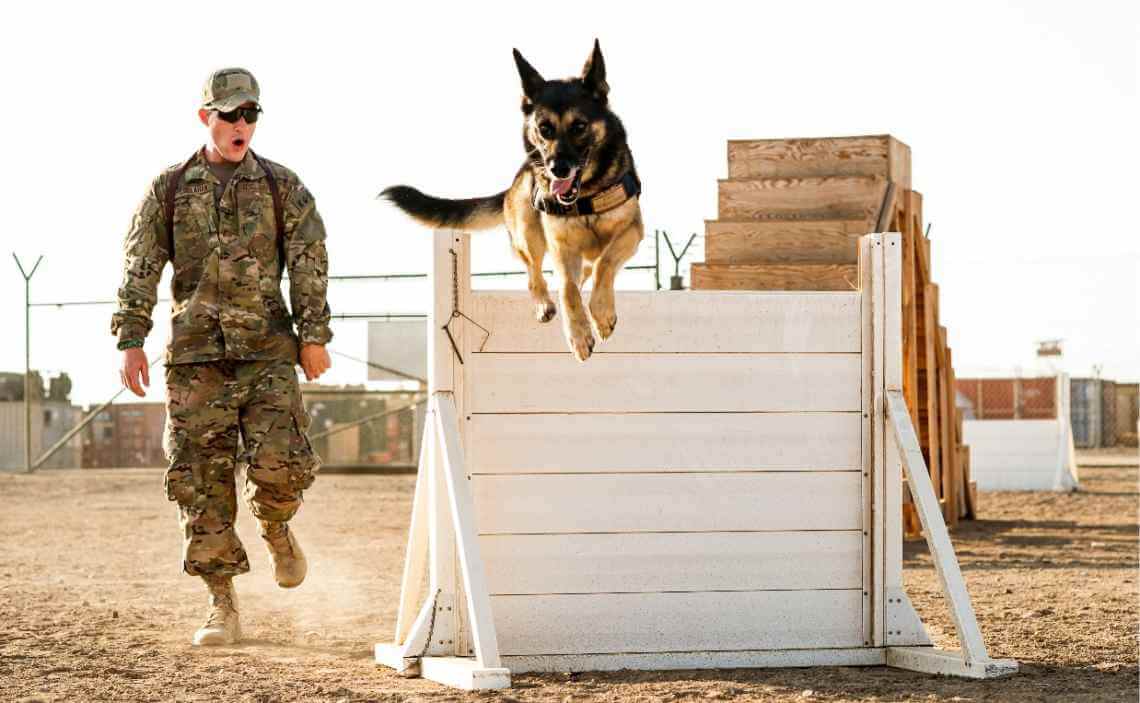 Trained Military Dogs are Extremely Valuable
Trained Military Dogs are Extremely Valuable
A fully trained bomb detection dog is likely worth over $150,000. But really, these dogs are priceless. With an average 98 percent accuracy in their detection skills, the peace of mind they provide to the troops is immeasurable.
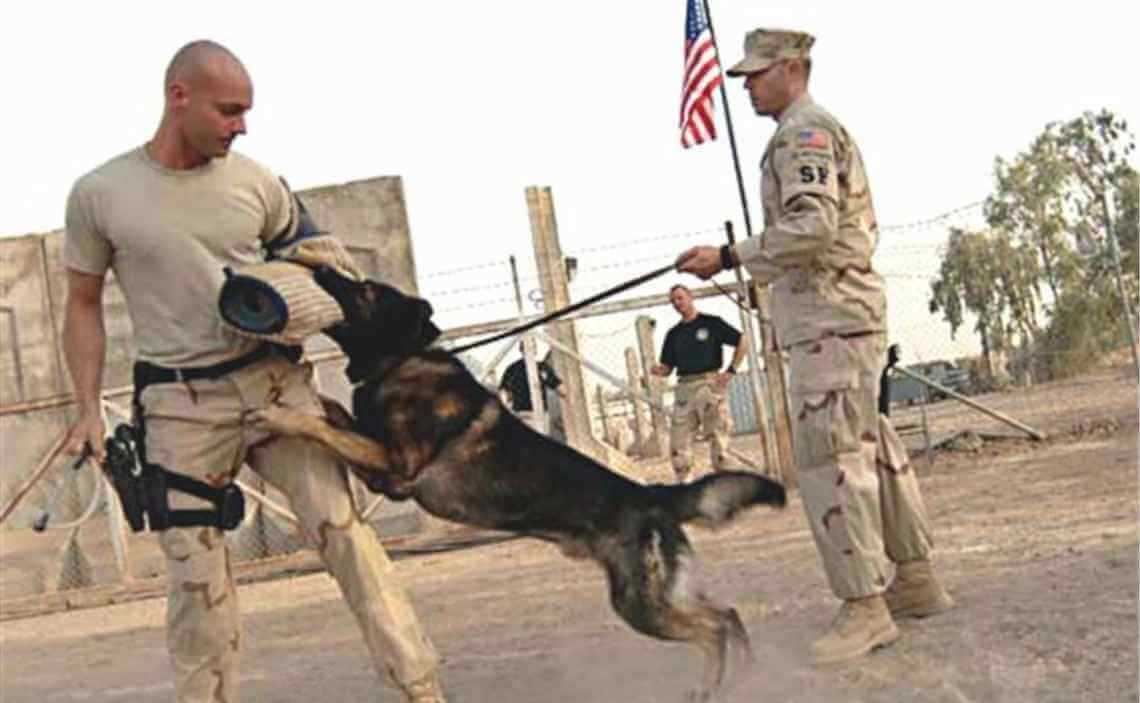 American Humane Military Dog Program
American Humane Military Dog Program
American Humane, the first program to serve with the U.S. military by rescuing animals (horses and canines) on the battlefields of WWI Europe, continues to offer support to Armed Forces in two key areas of focus: one, providing lifesaving service dogs to veterans suffering from Post-Traumatic Stress, and two, protecting America’s hard-working military dogs and recognizing their heroic contributions to our country.
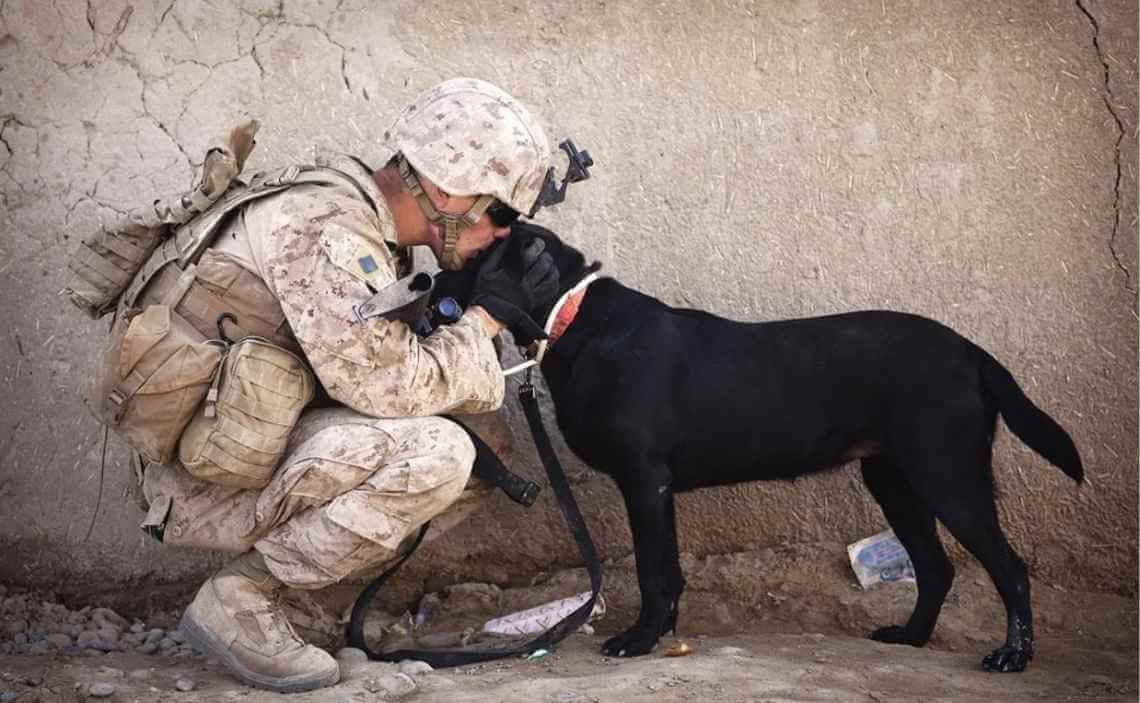 Specifically, the American Humane Center works to advocate for America’s active-duty military, veterans and military animals by:
Specifically, the American Humane Center works to advocate for America’s active-duty military, veterans and military animals by:
- Helping military K-9 teams on and off the battlefield
- Veteran’s with Post-Traumatic Stress and Traumatic Brain Injury obtain lifesaving service dogs
- Reunite retired military dogs who are left overseas with their handlers
- Support military families in needs with healing therapy animal
- Recognize and honor the life-saving contributions of military hero dogs
- Provide healthcare to America’s four-legged warriors when they finish service to their country so they can enjoy the healthy, happy retirement they so richly deserve
Learn more about the American Humane Military Program here.
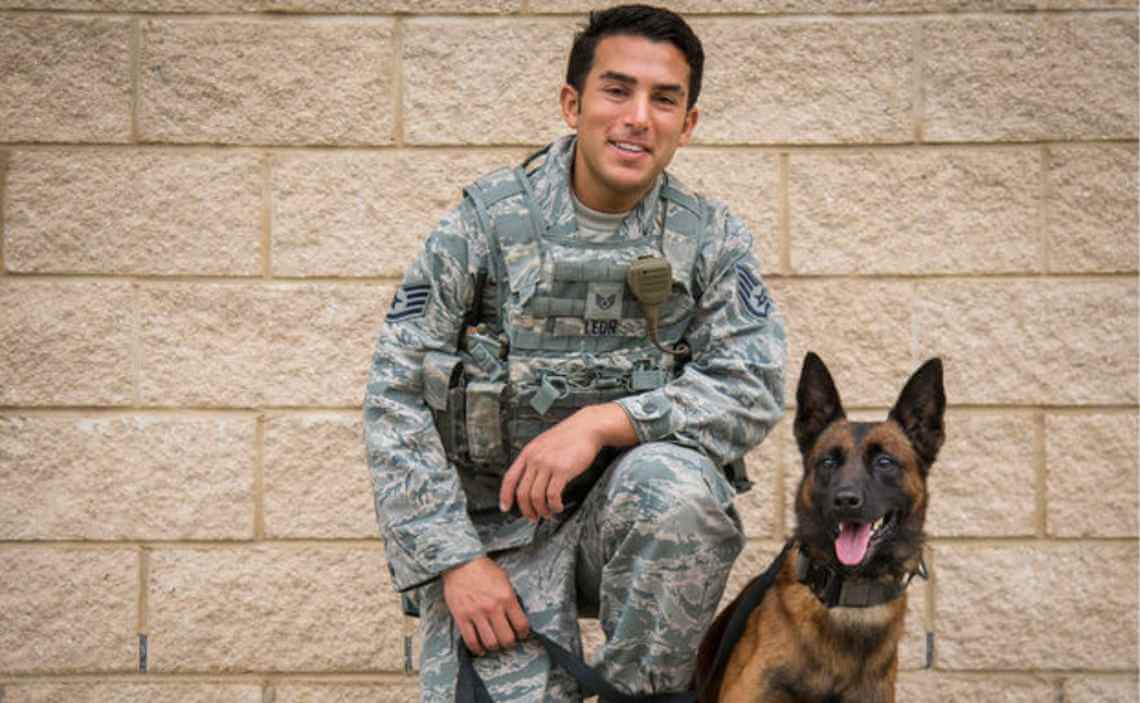 Have you had an experience with a military dog? Please share your experience with the rest of the Canine Campus community in the comments below…
Have you had an experience with a military dog? Please share your experience with the rest of the Canine Campus community in the comments below…

 15 Ways to Enhance Your Dog’s Learning Ability
15 Ways to Enhance Your Dog’s Learning Ability 10 Tips to Stop Dog Aggression Towards Cats
10 Tips to Stop Dog Aggression Towards Cats How to Teach Your Dog Not to Steal
How to Teach Your Dog Not to Steal Teach Your Dog to Take Treats Gently
Teach Your Dog to Take Treats Gently How to Teach Your Dog to Speak with Dog Talking Buttons
How to Teach Your Dog to Speak with Dog Talking Buttons






There are currently ~1,600 dogs serving the military. Their missions span across the land, air, and sea! Military dogs are trained for specific jobs. They may patrol, search and rescue, detect, track, and attack.
Thank you for sharing this information. Military dogs certainly are amazing animals. Thanks for stopping by our blog!
Good article! Thanks for the great explanation of what military dogs do.
Thanks for your comment, Stephen! Much appreciated! Hope to see you back visiting the blog again soon!